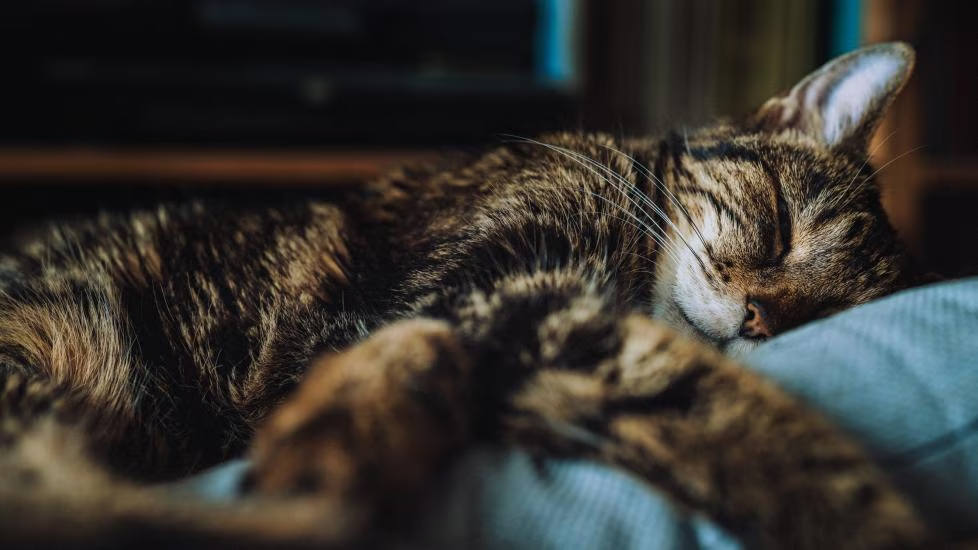Cat colds are one of the most common health issues faced by felines. While they typically aren’t life-threatening, they can make your cat feel uncomfortable. Understanding the symptoms, causes, and ways to treat and care for your cat during a cold can help them recover quickly and ease your worries. In this article, we’ll explore the common symptoms, primary causes, and effective treatments for a cat cold.
Symptoms of a Cat Cold
The symptoms of a cat cold are similar to those in humans but have some distinct characteristics. You should watch for the following signs:
1. Frequent Sneezing
Sneezing is one of the most common symptoms of a cat cold. When a cat’s nose is infected by a virus, it will sneeze to expel irritants or mucus from the nasal passages. If your cat suddenly starts sneezing frequently, it is likely a sign of a cold.
2. Runny Nose
When cats have a cold, there is usually an increase in nasal discharge, which may result in a runny nose. Initially, the discharge might be clear, but as the infection worsens, it can turn thicker and yellowish or greenish, which could indicate a bacterial infection.
3. Coughing
Cats with a cold may also cough, especially if the infection spreads to the throat or lungs. The cough can be dry or may produce mucus.
4. Watery Eyes
Your cat’s eyes might become unusually watery or red, which is a symptom of conjunctivitis. Eye discharge often accompanies a runny nose, indicating that your cat’s upper respiratory system is infected.
5. Loss of Appetite
Due to nasal congestion, cats often lose their sense of smell, which can lead to a reduced appetite. If your cat is showing less interest in food or eating significantly less than usual, this could be a sign they are coming down with a cold.
6. Lethargy
Cats with colds tend to become more tired and may stay in one place resting more than usual. If your cat seems more sluggish and less active than normal, it could be another indicator of a cold.
Causes of Cat Colds
Cat colds are usually caused by viruses, bacteria, or a combination of both. The most common causes of a cat cold include:
1. Feline Herpesvirus (FHV-1)
Feline herpesvirus is the leading cause of upper respiratory infections in cats. This virus can lead to a variety of symptoms, including sneezing, nasal discharge, and conjunctivitis. Once a cat has been infected, the virus can lie dormant and flare up during times of stress or illness.
2. Feline Calicivirus (FCV)
Another common viral cause of cat colds is feline calicivirus. This virus can cause symptoms similar to those of FHV-1, including respiratory issues and mouth ulcers. FCV is highly contagious and is often transmitted in multi-cat environments like shelters or catteries.
3. Bacterial Infections
While viruses are the most common cause, bacterial infections can also contribute to cold-like symptoms in cats. Bacteria such as Bordetella bronchiseptica can cause respiratory distress and may require antibiotic treatment.
4. Environmental Factors
Cold weather, stress, or exposure to other infected animals can make a cat more susceptible to catching a cold. Poor ventilation, overcrowding, and dirty living conditions can also increase the likelihood of respiratory infections.
Treatment for Cat Colds
While cat colds are typically not life-threatening, they still need proper care to prevent complications. Treatment will depend on the severity of the cold and whether a secondary bacterial infection has developed.
1. Hydration and Nutrition
It’s important to keep your cat hydrated and ensure they are eating. If their nose is congested, try offering them warm, wet food to make it easier to eat. In some cases, you may need to use a syringe to help administer water or food if your cat is not eating on their own.
2. Humidifier or Steam
Increasing the humidity in the room can help relieve your cat’s nasal congestion. You can use a humidifier or take your cat into the bathroom while you run a hot shower to allow them to inhale the steam. This will help clear their nasal passages and make it easier for them to breathe.
3. Medications
If the cold is caused by a bacterial infection, your vet may prescribe antibiotics. However, antibiotics are not effective for viral infections. If your cat is suffering from significant discomfort, your vet may also recommend anti-inflammatory medications to reduce swelling and fever.
4. Antiviral Treatments
For viral infections like FHV-1 or FCV, antivirals may be prescribed in some cases, particularly if the symptoms are severe or persistent. However, antiviral treatment is usually not required for mild cases.
5. Rest and Comfort
Make sure your cat has a warm, quiet, and comfortable space to rest while they recover. Avoid exposure to drafts or cold environments that could worsen their condition.
6. Vet Check-Up
If symptoms persist for more than a few days, or if your cat shows signs of worsening health, it’s essential to consult with your veterinarian. Severe respiratory distress, high fever, or lack of appetite may indicate a more serious underlying issue that requires professional attention.
Preventing Cat Colds
While it’s not always possible to prevent a cold, there are a few things you can do to reduce the risk:
- Keep your cat indoors to prevent exposure to infected animals.
- Vaccinate your cat against feline herpesvirus and calicivirus, as these are the primary causes of cat colds.
- Maintain a clean environment to minimize the spread of bacteria and viruses.
- Reduce stress for your cat, as stress can trigger flare-ups of dormant viruses like feline herpesvirus.
Conclusion
Cat colds are a common but treatable health issue. With proper care and attention, most cats recover fully from colds without any long-term complications. The key is to recognize the symptoms early, provide supportive care, and consult your veterinarian if the situation worsens. By maintaining a clean and comfortable environment for your cat and ensuring they are up-to-date on vaccinations, you can help minimize the risk of them catching a cold in the future.
If your cat shows any signs of respiratory distress or isn’t improving after a few days, don’t hesitate to contact your vet for advice and treatment.

